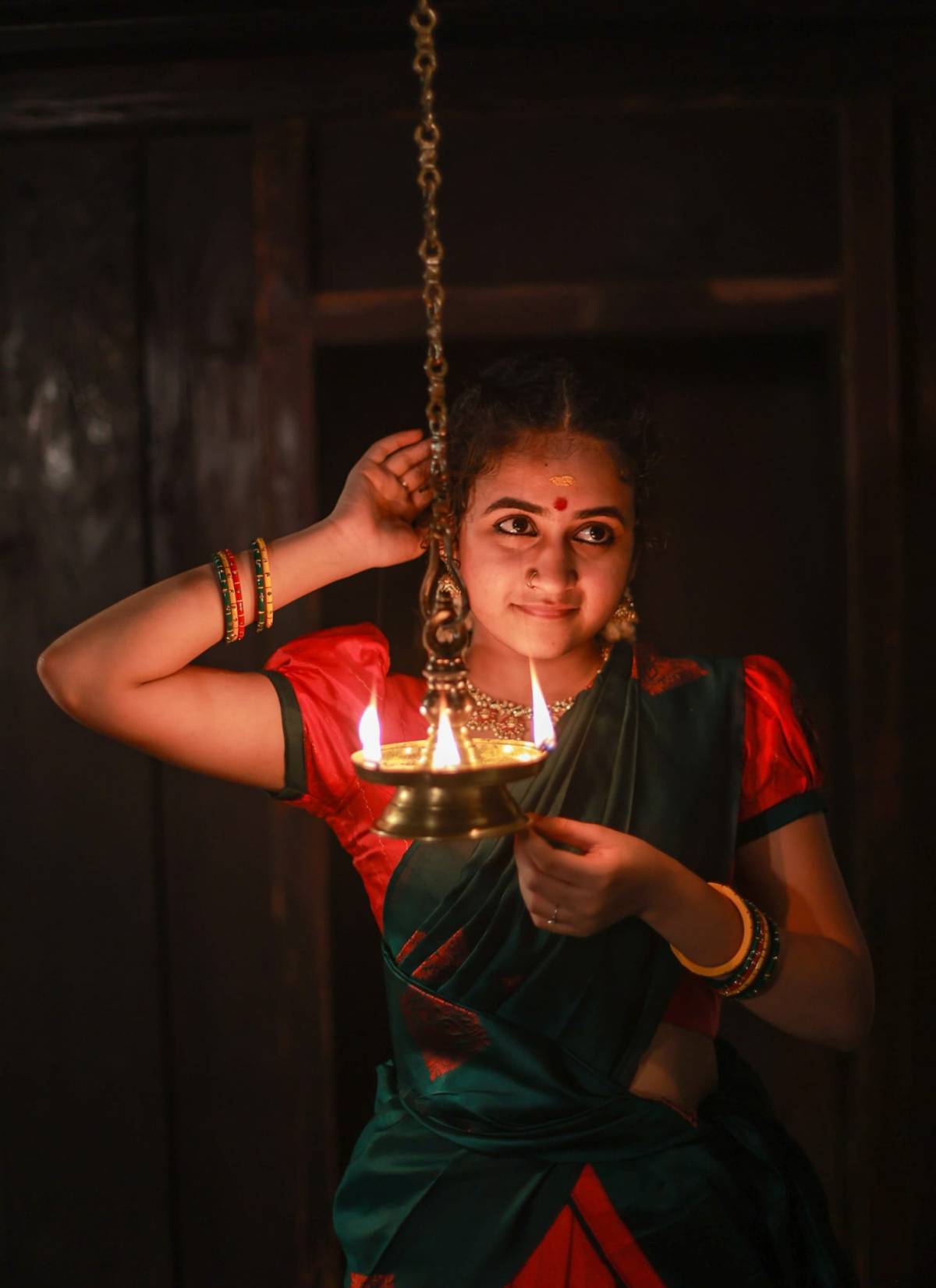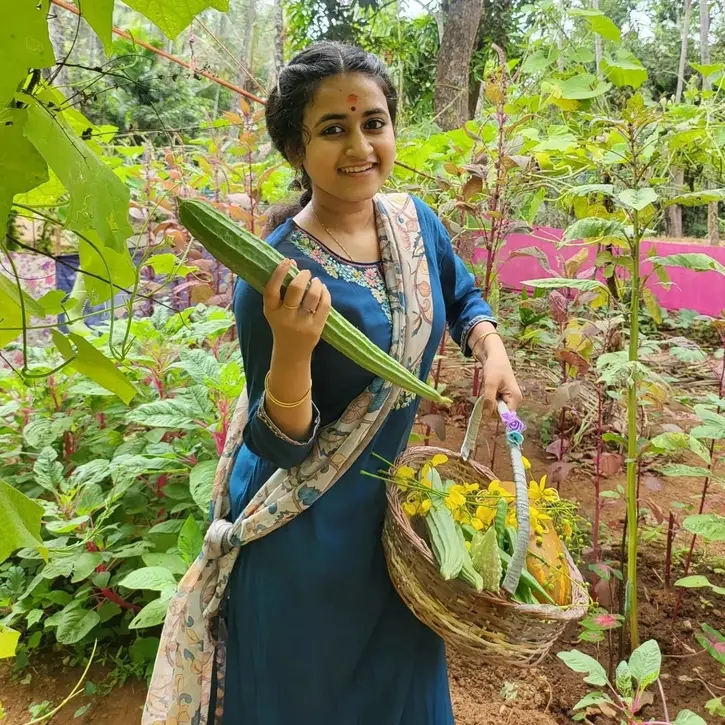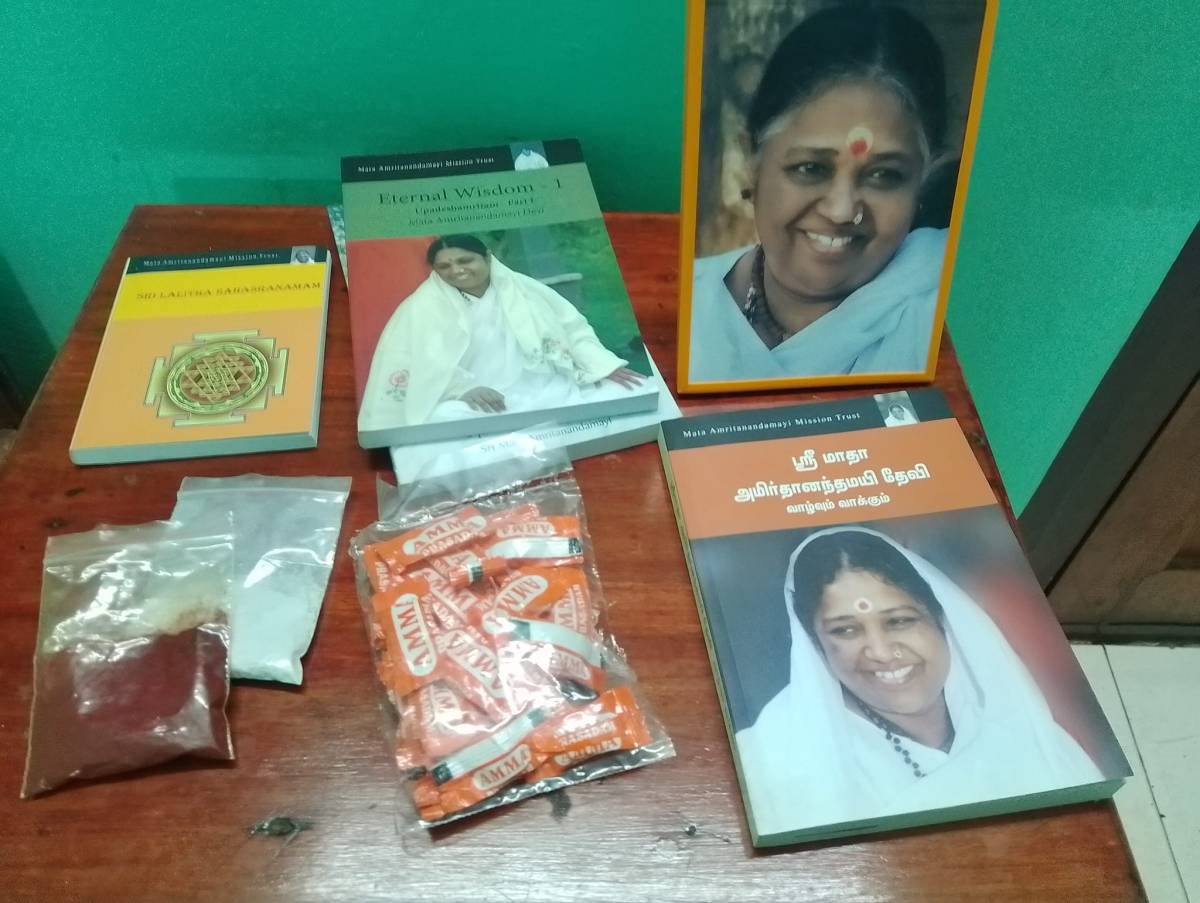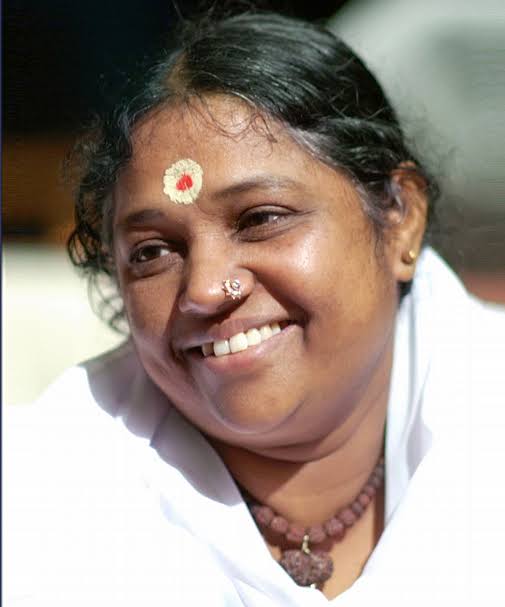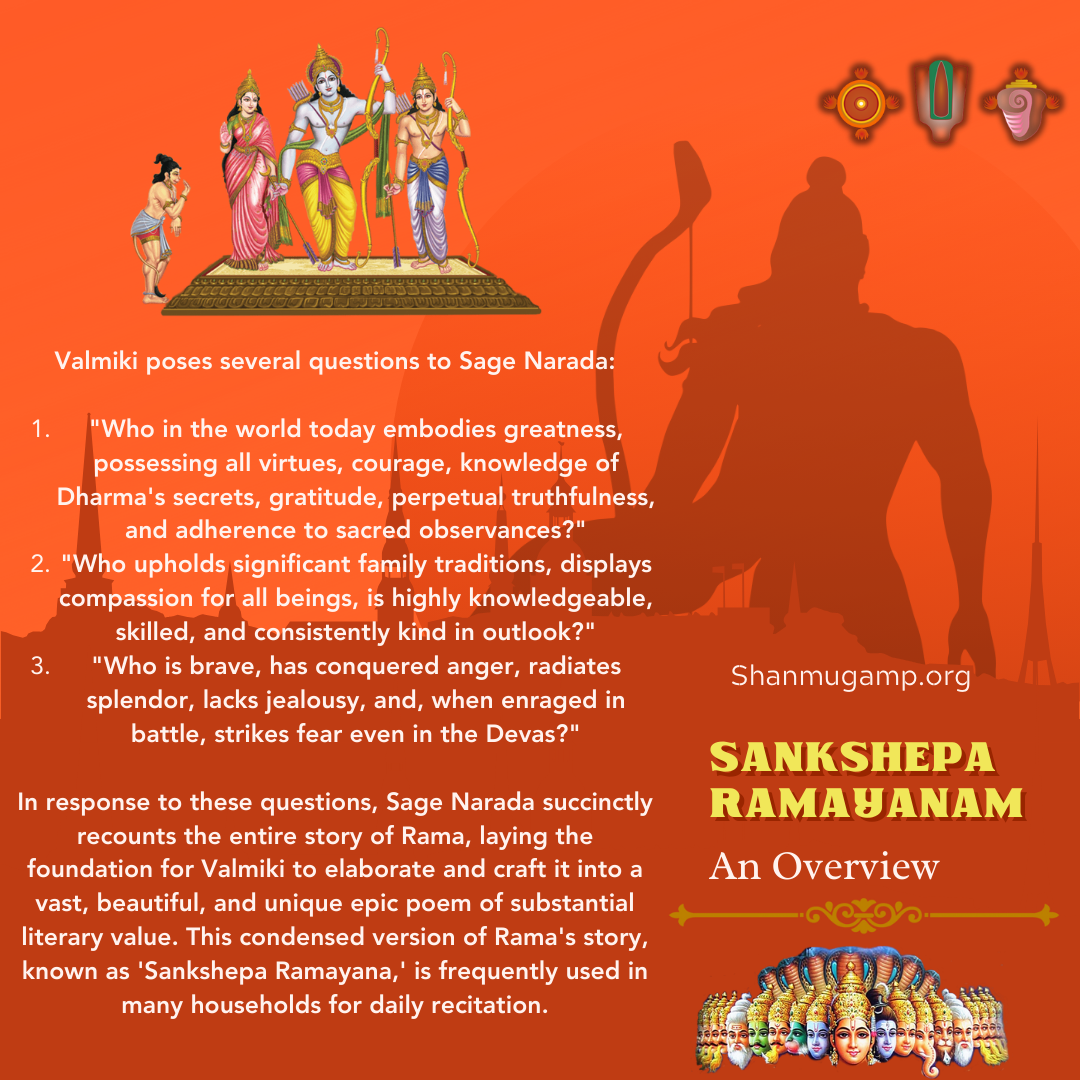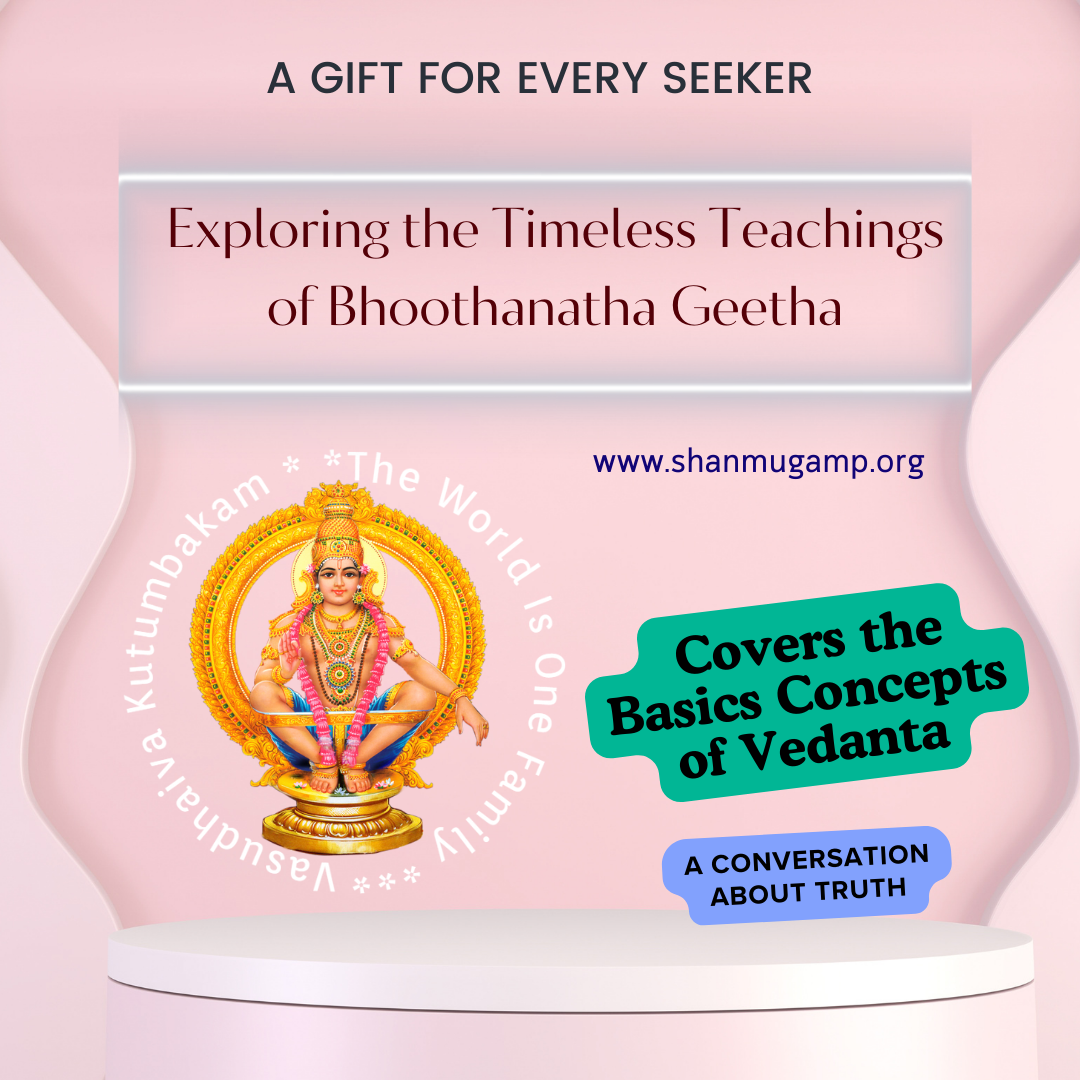In my recent post, “Amritapuri – A Homeless Guy’s Visit To A Hidden Oasis,” I mentioned that I would keep you posted about my experiences in Amritapuri. I have many stories to share about my experiences there, but I will reserve them for a post I will make in the near future. First, I want to talk about a legend about Parayakkadavu, where Amma’s ashram is located.
Parayakkadavu in Kerala can be compared to Thiruvannamalai in Tamil Nadu. When Amma’s father, Sugunanandhan, was picking cashew fruits with his friend as a 14-year-old boy, a sadhu visited the village. He told them, “Many wise men and sages have lived in this area, and their samadhis are buried here. Many people will come to this place in the future and attain Mukthi. This will become a holy place.”
Before I narrate the myth about Shiva, Parvathi, and their son Subrahmanya or Shanmukha, which is believed to have happened here, I’d like to discuss legends in general.
It is said in the Rig Veda, “ekam sat viprah bahudha vadanti,” which means “God or Truth is one, but wise people call It by many names.” God is described in our scriptures as avyakta, which means “beyond being a person or personality.” God is the very essence of everything.
Let’s examine a verse from the Bhagavad Gita, Chapter 2, Verse 16:
नासतो विद्यते भावो नाभावो विद्यते सत: |
उभयोरपि दृष्टोऽन्तस्त्वनयोस्तत्त्वदर्शिभि: || 16||
nāsato vidyate bhāvo nābhāvo vidyate sataḥ
ubhayorapi dṛiṣhṭo ’nta stvanayos tattva-darśhibhiḥ.
Simply put, this means that the seers of Truth have observed and concluded that which exists (Truth, sat or Brahman) doesn’t have non-existence, and the unreal (the Maya, which really doesn’t exist apart from Brahman) doesn’t have any existence. They reached this understanding after studying the nature of both.
The word ‘sat’ is a singular noun. From this sloka, we can learn that nothing exists apart from God. You can realize the God within you by purifying your mind and doing sadhana and self-inquiry.
When I was young, I used to think that Shiva, Parvathi, Murugan, and Ganapathy are probably sitting together and chatting right now. I used to wonder why there are no new updates because, all these stories usually begin with, ‘Long time ago’.
Well, that is not really the case. We access the divine through different forms, based on both the individual and the situation.
For example, I have felt the grace of Hanuman multiple times. I have received many signs giving me convincing personal evidence. If you want to take a quick leap from an extremely bad situation to an extremely good situation, pray to Lord Hanuman. Because Hanuman was the one who constructed a bridge for Rama to take a leap from one piece of land to another piece of land that lies on the other side of the sea.
Assume that the eternal Brahman that is ‘everywhere and as everything’ has assumed this form. Go to a Hanuman temple and chant Hanuman Chalisa every day with trust and love. Offer something to Hanuman, donate some small amount to the temple if possible, and take the prasad.
It will work. It worked for me. It worked for Sooryagayathri. It has worked for countless devotees who have prayed to Hanuman. I am still writing a post explaining the whole story about it as I still have to work on it. Not even 50% of the post is complete but I will complete it as soon as possible. I made a video on my Youtube channel as an announcement that I will make a post about the existence of God, particularly about the grace of Lord Hanuman.
Grace works slowly in the beginning. But as you keep progressing in devotion and the spiritual path in general, your heart opens up, and grace becomes much more accessible.
Legends or myths are usually modified versions of real stories, and they may sometimes even serve a personal purpose of yours. Suddenly you may get a spark or idea after getting to know a myth. There are many lessons that Ramayana and Mahabharata teach us.
The myth from Parayakkadavu served me a personal purpose. It gave me an assurance that what I am doing is right. It is a clear message from the divine. In fact, many miracles have already happened in this area based on this myth, which I will also cover in this post.
Now, let us delve into the myth. Shall we?
One day, Lord Murugan, also known as Subrahmanya, the son of Shiva, made a mistake, and Shiva became very angry. He cursed Murugan to be born as a whale. Parvathi became very sad and pleaded with Shiva to forgive him. However, Shiva, still consumed by anger, cursed Parvathi to be born as a daughter of a fisherman. Then, following the pattern seen in many myths, after their anger subsided, he offered a remedy for the curse. Shiva said, “Okay, don’t worry. I will come and save you both later.”
Let me share something humorous. It’s no wonder why Murugan became a whale. Native English speakers pronounce the ‘w’ with rounded lips. But we Indians usually pronounce it as we pronounce the letter ‘v’’ when it occurs in words. Murugan always holds a ‘Vel’ in his hands anyway. Vel means spear in Tamil and it is pronounced just like whale but with a ‘v’ sound in the beginning. Murugan is already called by different names like ‘Sakthivel’, ‘Kandhavel”, “Jnanavel”, etc. We could even write Sakthivel as Sakthiwhale now (as we now know the story), because we Indians don’t differentiate between ‘W’ and ‘V’ anyway.
The story is quite lengthy. Therefore, rather than rewriting the entire narrative, I’ll copy and paste the excerpt from the book, “Mata Amritanandamayi: Life & Experiences of Devotees” by Swami Amritaswarupananda (published by Mata Amritanandamayi Mission Trust). The excerpt will be in italics, and my comments afterward will be in normal font.
In the Alappad Panchayat1, district of Kollam, Kerala state, South India, there is a small village named Parayakadavu. This village lies amidst an endless expanse of coconut palms stretching along a narrow peninsula separated from the mainland to the east by an intercoastal waterway, while the western shore of the village is buffeted by the sparkling blue-green Arabian Sea.
The people of the village belong to a humble clan of fishermen who proudly trace their ancestry as far back as the sage Parasara. It is sage Parasara who married the fishermaid Satyavati, mother of Sri Veda Vyasa, the renowned codifier of the Vedas. There are many legends told about the sanctity and greatness of this village where daily life and social custom are still closely associated with divine myths, stories which the villagers strongly believe took place thousands of years ago. One such legend is as follows: Once Lord Subramanya2, son of Lord Shiva and Goddess Parvati, committed a serious error. Infuriated by the transgression of His son, Lord Shiva cursed Subramanya, causing him to be born as a fish. Dejected by the fate of her son, Parvati requested the Lord to forgive Subramanya’s fault. Instead of consoling Her, Shiva became more angry and condemned Parvati as well to be born as a fisherwoman. Later when Lord Shiva’s anger had subsided, He told Subramanya that He Himself would come and liberate both of them at the appropriate time and thus blessed them. In accordance with Lord Shiva’s curse, Lord Subramanya assumed the form of a fish, rather, of a huge whale. Appearing in the sea of Alappad, the whale caused the fishermen terrible harm. Accustomed to fishing both during the day and night, the fishermen could now no longer venture into the seas. Sometimes the whale tore the cast nets of the fishermen to shreds, and at others it overturned their boats, endangering their very lives. The villagers were doomed to poverty and starvation.
The king of the fishermen failed to find a solution. His treasury was becoming bankrupt, as he was feeding the starving people. Finally, in an attempt to solve the problem, he made a proclamation: the person who could catch the troublesome whale would be richly rewarded, and would also be given the hand of the king’s beautiful daughter in marriage. Yet the huge whale was so fearsome that nobody came forth to accept the challenge. The king and his subjects were completely disheartened, when an old man mysteriously appeared from the north. Nobody knew who he was. Approaching the king, his back bowed with age, he boldly declared that he could catch the huge whale and save the people from complete devastation.
Accompanied by the astonished king and his subjects, the old man walked confidently toward the sea. Making a long rope by twisting long strands of vines, the old man threw one end into the sea while holding the other end tightly in his hand. The rope of vines encircled the place where the huge whale was lying submerged. Passing the rope to the fishermen, he instructed them to pull with all their strength while chanting a particular mantra. As instructed by the old man, the fishermen started pulling the rope while chanting the mantra. After hours of tremendous effort, the giant fish, entrapped in the vine rope, was dragged to the shore.
Suddenly, to everyone’s amazement, the whale vanished, and in its place stood Lord Subramanya, released by Lord Shiva from the curse. A temple for Lord Subramanya was built on the spot where the giant fish had been shored. That temple stands today as a living monument to remind us of the old story.
The legend does not end there. Now Lord Shiva, in the guise of the old man, stepped forward and stood before the king, demanding the reward of the hand of the princess in marriage. The king, who had promised his only daughter to the champion who saved his people, was now trapped in a dilemma. He and his subjects were completely distraught. How could a father, especially as king, give his exquisite young daughter in marriage to an old man? The king begged him to ask for anything in the entire kingdom but his daughter. The old man calmly replied that a king must keep his promise and be truthful to his word.
Now the king was in a real quandary. Truth was the strength of the fishermen; they firmly believed that truth was their protector. If one were not truthful, they said, one who went fishing was jumping into the wide-open, fierce mouth of death. The king was paralysed; he could neither break his vow nor give his beloved princess in marriage to the old man. At this point, the princess, who was in fact Goddess Parvati Herself, stepped forward and spoke without hesitation: “Father and most noble king, it is everyone’s duty to protect and preserve righteousness (dharma). Nothing should stand against it.” Despondent, the king had no choice but to allow her to depart with the old man. No one suspected that the humble fishing kingdom had become the stage for a divine drama in which Lord Shiva and Goddess Parvati had been reunited. With heavy hearts, the people followed the divine couple for some distance asking, “Where are you going? We would like to come with you.” They replied, “We don’t have any particular dwelling place (uru); the spot we reach will be our dwelling place (chellunna uru).”
Lord Shiva and Goddess Parvati continued on their way, followed by the fisherfolk, finally reaching a spot where they stopped. As Lord Shiva stood facing east and Goddess Parvati faced west, the two became transformed into stone images. Chelluruna uru (the place reached) later became Chenganoor of the present day.
In time a temple was constructed and daily worship was begun, when something very strange occurred. Whenever water was brought to the sanctum sanctorum to perform the worship, the priests found a fish in it. This made the performance of the daily worship impossible. In order to find a solution, the temple authorities made an astrological calculation and discovered the whole story of Lord Shiva, Goddess Parvati, and the curse of Lord Subramanya. The astrological forecast further revealed that the marriage ceremonies of the old man and the princess had never been conducted. According to the custom, the people of the Alappad coast, where Goddess Parvati had been born as a fishermaid, should come with dowry and other marriage presentations to Chenganoor in order to conduct the marriage. Subsequently the necessary preparations were made in Chenganoor and Alappad. The villagers of Alappad duly assembled the paraphernalia and travelled to Chenganoor to conduct the divine marriage ceremony. To this day, every year during the festival season, this custom is followed in memory of the ancient legend. The temple still remains a centre of attraction to thousands of devotees.
A few decades ago an interesting incident took place in connection with this story. One year the people from the Alappad coast did not participate in the festival by observing the customary rules and preparation, thinking it meaningless and wasteful to spend a lot of money to travel all the way to Chenganoor. They thought, “Why should we cooperate in a festival which is conducted in a distant place?” Mysterious happenings immediately took place in the Chenganoor temple.
The decorated elephant that was to carry the Lord’s idol in the procession stood still, refusing to take even a step. All efforts to make it move failed. Word was immediately sent to Alappad of this inauspicious occurrence, but too late. Smallpox had already broken out there. Realizing their foolish mistake and with deep remorse, the villagers made their way to Chenganoor without delay, bringing all the preparations for contributing to the festival according to the custom. Such is the ancient lore that is intimately interwoven with this coastal landscape and its people. Is it a wonder then that this sacred place has again become centre stage for a divine drama?
******
1 An alliance of five villages, the governing body overseeing local affairs.
2 Another name for Sri Muruga, the brother of Sri Ganesh
I trust you found the excerpt enjoyable. The memories of my time in Amritapuri remain etched in my heart, never to be forgotten. Allow me to extend my deepest gratitude, love, and prayers to Amma for her boundless grace and blessings.

